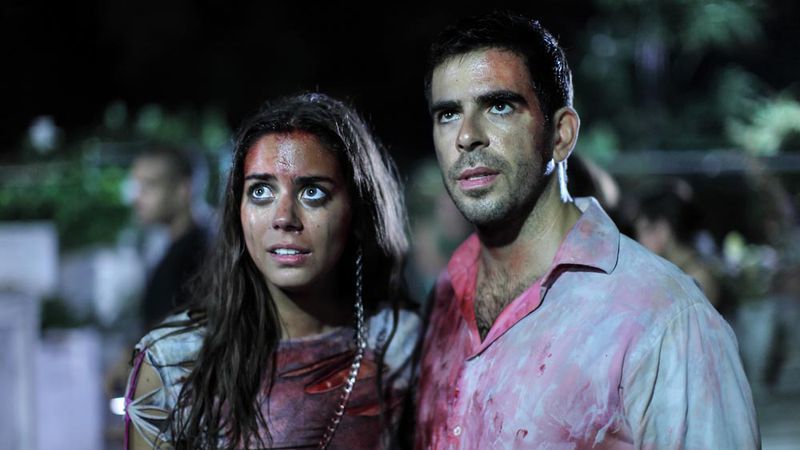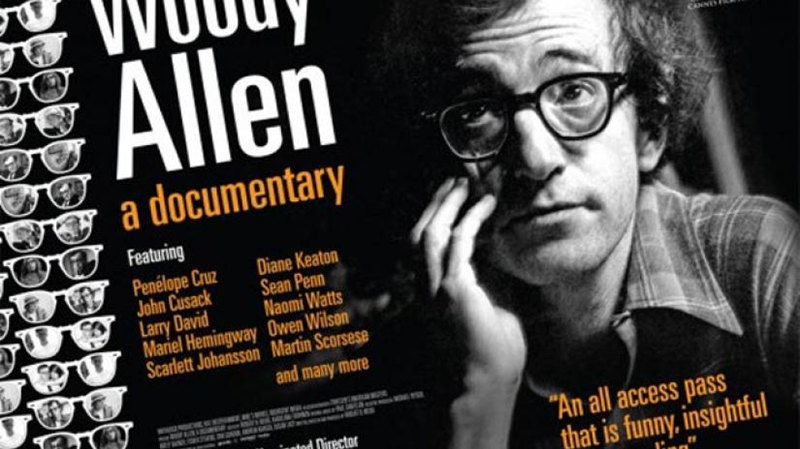Most people know about Pol Pot’s ethnic cleansing campaign against Vietnamese sympathizers because of the 1984 war drama “The Killing Fields.” Most Cambodians, we get the feeling from this new documentary by Rob Lemkin and Thet Sambath, don’t know as much.
Young Cambodians know only that close to two million of their people were rounded up and systematically executed in the rice fields during the ‘70s. One older woman says she won’t drink the water because she knows dead bodies are buried there. But no one talks much about this dark period in Cambodian history. That’s because the killers—Cambodians, themselves who acted in service of the communist Khmer Rouge—relocated within the boundaries of this Southeast Asian nation and were absorbed again into agrarian society once the conflict ended. As this documentary shows, killers and survivors who lost family members now live and work side by side, so the ones old enough to remember the purge avoid the topic.
Some documentaries are driven by aesthetics, but “Enemies of the People” is driven by the simple desire to document details about what happened, so future generations will know. It’s a film that records the attempt to build an oral history, and the result of both patience and persistence. Sambath, a senior reporter for The Phnom Penh Post who was orphaned by the Pol Pot purge, spent 10 years of his life going into the provinces to track down and interview the killers for posterity. This, he did in his spare time, in addition to his newspaper assignments.
At the same time, the United Nations had backed Extraordinary Chambers in the Courts of Cambodia, which was conducting an investigation of its own and looking to bring top members of the Khmer Rouge to trial for war crimes. So people are even more guarded about talking and perhaps implicating themselves. It’s more than a little extraordinary that one of the men Sambath visits regularly in order to gain his trust and eventually convince him to tell the truth is none other than Nuon Chea, the number two man in the Khmer Rouge. On tape he tells Sambath that it was he alone who asked Pol Pot to take the leadership rather than share it with him, and he defends the cleansing as a defense against “enemies of the people.” He also scoffs at the war crimes tribunal, saying how they had $52 million to work with and that money is already spent.
Attempts at artistry—as when Lemkin and Sambath opt for long shots of the murky water in the rice fields, lingering overly long, as we’ve already grasped the symbolic weight—aren’t nearly as successful as shots of contemporary Cambodian life as Sambath and two “killers” he’s recruited return to the original killing fields and seek out more Khmer Rouge to be interviewed. When some peasants pass, they stop talking. Other times they wear dark glasses so as not to be recognized. And immediately after we watch a farmer slit the throat of a live chicken and bleed it to death while it’s still kicking and convulsing, Sambath asks the farmer—a former Khmer Rouge—to show him how he used a knife to kill undesirables. As he does so, he explains, “I slit so many throats my hand ached.”
At one point Sambath’s search for the truth takes him to a high-ranking woman who agrees to be filmed but not to have her face visible. She’s shown in shadows as she talks about the orders that were given, and where those orders come from. “After we solved the problem I felt really bad, she says.” And he meets with a woman who worked as a servant in a Khmer house and, out of curiosity, opened a box in which secret papers from secret discussions had been placed. One paper spoke of Vietnamese spy networks and read, “We must find and eliminate all ethnic minority people.” While there was no photocopy, at least there was a paper trail. As the box notes point out, “This is investigative journalism” which resulted in on-camera confessions. The film was shown at the re-opened trial of Nuon Chea, Brother Number 2, in which he says, “If we had shown mercy to the people, the nation would have been lost.” Brother Number 1 of the People’s revolutionary force, Pol Pot, died in prison in 1998.
British filmmaker Rob Lemkin wrote the voiceover script that Sambath performs and also directs the mostly hand-held camera filming. He obviously saw in Sambath’s quest a lot more than what Sambath had in mind: producing a record on-camera so future generations of Cambodians could know the full truth about what happened. Lemkin obviously saw that there was a personal drama here too, with Sambath looking for some kind of closure, given his own loss of father, mother, and brother. There was drama and mystery in the gradual conversations with the killers. Would the ever open up? How many visits would it take? What triggers would be required to get them talking? A trip to the killing fields? An anecdote? Name-dropping?
Finally, “Enemies of the People” is a reporter’s textbook, something that should be shown to all would-be investigative journalists. Investigation requires patience, persistence, time, and measured responses. Sambath waits until just the right moment to let Nuon Chea know that he was victimized by the purge. And it elicits an apology, rather than a denial. In this Internet Age, some things require old-fashioned investigative methods, and there’s no substitute for face-to-face, eyewitness investigation. It’s a bonus that there are enough shots of the Cambodian countryside to give us a sense of how life is lived there now . . . and to imagine how life must have been lived during those dark days in Cambodian history. There are no vintage photos intercut and precious few film clips to jar us and take away from the main, investigative narrative. But who needs them? The words we hear are chilling enough.
Video:
For a documentary shot entirely in the field, “Enemies of the People” has a good amount of detail, strong edges, and natural-looking colors. It fills out a 16×9 monitor, with no edge distortion.
Audio:
The audio appears to be a Dolby Digital 2.0, but it’s all talk: voiceover and interviews. There’s nothing exceptional to report here, nor anything negative.
Extras:
This two-disc set is loaded with bonus features—more than six hours. The first disc contains the feature film, along with six deleted uncut scenes, including one with Nuon Chea and segments in which Sambath searches for his missing brother. There’s also one which includes a warning of extreme content in which Suon speaks candidly and graphically. “Anatomy of a Massacre” is an excellent 25-minute mini-documentary that’s edited in the same style as the film itself, and focuses more specifically on the Tuol Po Chrey killing field and the six killers that Sambath tracked down. There’s more detail here than on the main documentary. Finally, there are two better-than-average commentaries: one with the director and Sambath, and the other with the director and his editor, Stefan Ronowicz.
Disc two features Q&A sessions from the Phnom Penh premiere, Sundance Film Festival, ICA London, Stranger than Fiction NYC, TEDx Phnom Penh, and Museum of Tolerance, LA. Also included are three short TV reports citing the film as news, a Doc Talk director’s interview, an “Encounters of the Evil Kind” music video (which seems a little off-the-wall and out-of-step with the film), and excerpts from a Long Beach and Bangkok videoconference linking victims and perpetrators. Emotions and tensions flare. “Their absolute authority held a firm grip on us,” one of the killers said of the regime that would have killed them, too, had they not complied.
Bottom line:
Though “Enemies of the People” is an investigative journalistic film, there’s enough here to hold most people’s interest. Like Chillingworth’s investigations of the minister Dimmesdale in Hawthorne’s Scarlet Letter, Sambath’s conversations with Brother Number 2 and other killers aren’t just reporter’s interviews. They’re attempts to cleanse and purge the heart. That’s where the drama lies.


